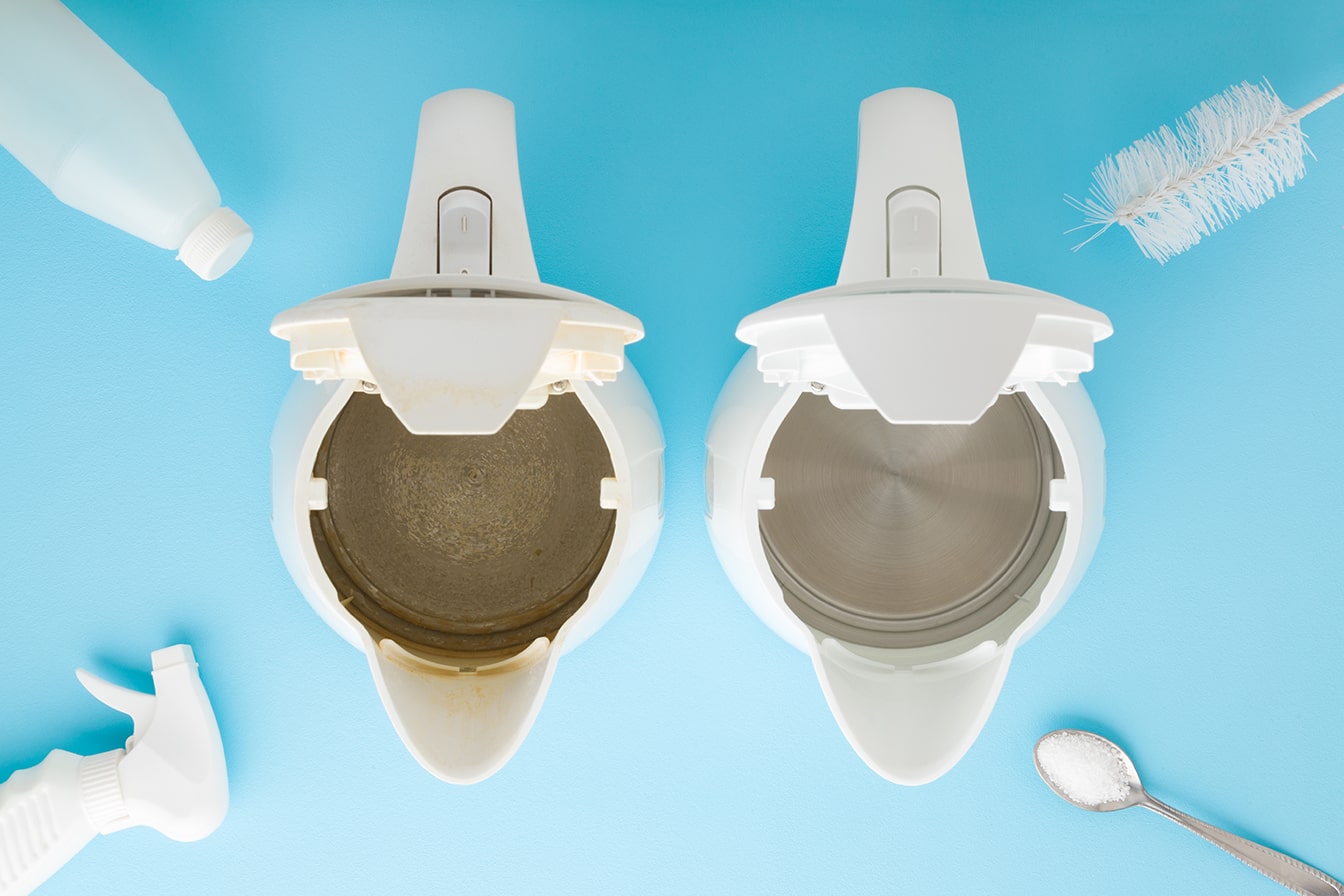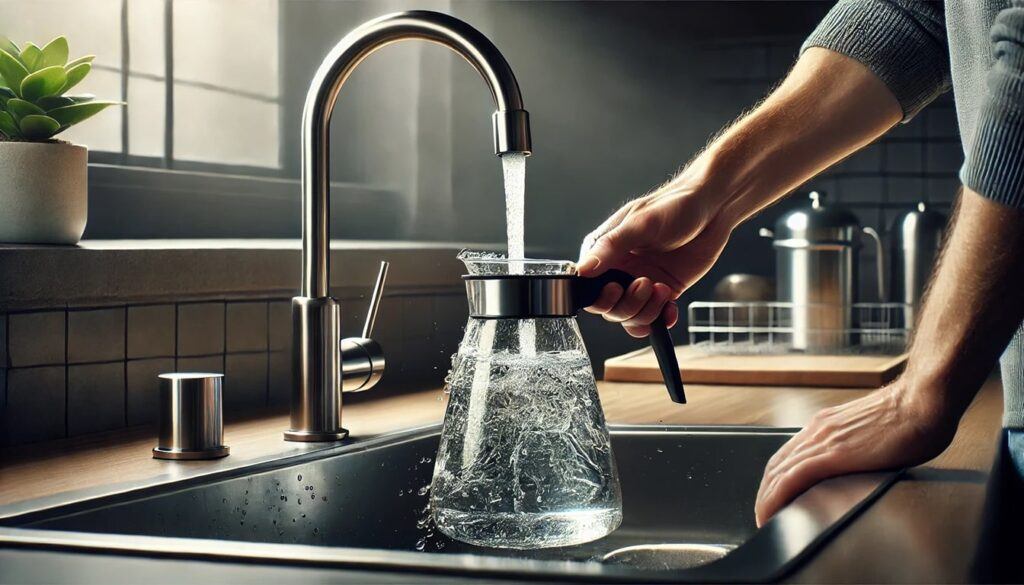How to Descale Coffee Machines: The Ultimate Routine

Affiliate Disclosure: As an Amazon Associate, I earn from qualifying purchases. This post may also contain other affiliate links, meaning I may earn a small commission if you buy through them, at no extra cost to you. Your support helps keep this site running and allows me to continue sharing great content. Thank you!
Ever wondered why your coffee doesn’t taste as good as it used to? Did you know that over 50% of coffee machine owners don’t descale their machines regularly? Research shows that mineral buildup can significantly impact coffee quality. Learning how to descale coffee machines is crucial for keeping your coffee tasting fresh and ensuring your machine lasts longer.
Mineral buildup in coffee machines often goes unnoticed, silently sabotaging your daily brew. Minerals like calcium and magnesium accumulate over time, forming a crusty deposit known as scale. This buildup disrupts water flow, affects your coffee’s taste, and makes your machine work harder, potentially shortening its lifespan.
Descaling is the process of removing these unwanted deposits to ensure your coffee maker stays efficient and produces a delicious brew. Just as you’d take care of your car to keep it running smoothly, regular descaling is like a spa day for your machine, necessary to maintain it in top condition.
Whether you own a drip coffee maker, an espresso machine, or a high-end model, descaling is crucial for the quality of your brew. Ignoring this essential maintenance can lead to higher energy bills, bitter-tasting coffee, and an overworked machine.
Now that you understand why descaling is vital, let’s dive into the signs that indicate your machine needs descaling.
Why Descaling Matters
Did you know that the NSF reports that the coffee machine reservoir is one of the germiest items in our homes? Coffee machines often come into contact with hands, hot water, and coffee oils, creating an ideal environment for bacteria and mineral build-up. This build-up can alter the taste of your coffee and reduce water quality. Regular descaling helps improve flavor and reduces health risks from bacteria and mold.
Understanding why descaling matters is important, but recognizing the signs that indicate your machine needs descaling is just as crucial. Let’s take a closer look at these signs.
Signs Your Machine Needs Descaling


There are some telltale signs your machine needs attention:
- Slow Brewing: If your coffee machine takes longer than usual to brew, it could be a sign of mineral deposits clogging the internal components. For example, if your morning brew starts taking twice as long as it used to, it’s likely time for a descaling session.
- Off-Tasting Coffee: If your coffee tastes bitter or off, despite using the same beans and settings, mineral build-up could be affecting the water quality and heat distribution. This change in taste is often one of the first signs of scale accumulation.
- Unusual Noises: Gurgling or sputtering noises can indicate that your machine is struggling against scale build-up, affecting water flow. These noises are your machine’s way of signaling that it’s working harder than necessary.
- Indicator Light: Some coffee machines have a descaling light that signals when it’s time to descale. Follow these reminders for optimal maintenance.
Ignoring these signs can lead to poor performance, higher energy bills, and a shorter lifespan for your coffee machine.
Choosing the Right Descaling Method
When it comes to descaling, there are a few methods to choose from, depending on your preferences and machine type:
| Method | Pros | Cons |
| Commercial Solutions | Specially formulated, effective, gentle on machine components | More expensive, may contain harsh chemicals |
| White Vinegar | Inexpensive, readily available, eco-friendly | Can erode machine parts over time, may leave residual taste if not rinsed properly |
| Citric Acid | Effective, eco-friendly, gentle on machine components | May require multiple cycles for complete descaling, harder to find than vinegar |
- Best For: Commercial solutions are ideal for newer or more expensive machines where you want to ensure gentle yet thorough cleaning. Vinegar is a great budget-friendly option, while citric acid provides a natural alternative with less odor.
Watch this quick video guide to see how to descale your coffee machine effectively. Whether you’re using vinegar, citric acid, or a commercial solution, this step-by-step guide will make the process simple and straightforward.
Regardless of the method you choose, it’s crucial to follow the instructions specific to your coffee machine to ensure effective and safe descaling.
Caring for Your Coffee Machine Post-Descaling
After descaling, take a few steps to keep your machine in top shape:
- Rinse Thoroughly: Run several cycles of clean water through your machine to remove any traces of descaling solution.

- Clean Removable Parts: Wash the carafe, filter basket, and water reservoir with warm, soapy water. Cleaning tablets or wipes can help maintain cleanliness.
- Keep It Dry: Let the machine dry thoroughly to prevent mold or future scale build-up. Leaving the reservoir lid open can help.
Establishing a Regular Descaling Routine
Setting a routine for descaling is key to maintaining the quality of your coffee and prolonging the life of your machine. For most machines, descaling every three months is ideal, though hard water may require more frequent descaling. Mark your calendar or use built-in reminders on newer machines to stay on track.
To help make descaling a habit, try tying it to other household maintenance tasks, like changing air filters or cleaning the refrigerator. This way, descaling becomes part of a broader routine, making it less likely to be forgotten.
Alongside descaling, regular surface cleaning and part checks are also considered. Inspect hoses, seals, or any other components that might wear out over time. Replacing worn-out parts promptly can prevent bigger issues and keep your machine running smoothly.
Final Thoughts: Keep Your Coffee Machine in Top Shape
Descaling your coffee machine is a simple yet essential task that ensures better-tasting coffee and a longer-lasting machine. By removing mineral build-up regularly, you keep your machine efficient and avoid costly repairs. Whether you use commercial descaling solutions or DIY methods like vinegar or citric acid, consistency is key.
We’d love to hear from you! Share your descaling tips or preferred methods in the comments. Your insights can help others enjoy great coffee every day!

I really enjoyed reading your article on how to descale coffee machines! It’s super informative and easy to follow, especially with the step-by-step instructions you laid out. I love how you explained why descaling is so important for keeping the machine in top shape—it makes me realize I should be doing this more often!
I was curious whether there’s a preferred descaling solution that works best for most machines or if it depends on the model. I also noticed you mentioned using vinegar as an alternative. Have you found it to be as effective as commercial descaling products?
I’m glad you found the article helpful! For descaling, most citric acid-based solutions work well across different machines, but always check the manual for any specific recommendations. Vinegar is a great budget-friendly alternative, but it may not be as effective for heavier mineral deposits compared to commercial products, especially in hard water areas. Personally, I find citric acid more efficient and without the lingering smell.
If you’re unsure about your machine, following the manufacturer’s advice is always a good start. Let me know if you have more questions!
Awesome read! It’s super easy to overlook descaling, but it really enhances the coffee taste and helps the machine work better. I was shocked to learn that more than half of coffee machine owners skip descaling—count me in! I’ve always gone with vinegar since it’s cheap, but I might give citric acid a shot next time for a more natural option.
By the way, what’s your go-to method for descaling your coffee maker, and how often do you do it?
You’re absolutely right—descaling really does make a noticeable difference in both taste and machine performance! Vinegar is a great budget-friendly option, but citric acid is excellent for those who want a gentler, more natural clean without the strong smell. I usually descale every 1 to 3 months depending on how much the machine is used, and I find citric acid breaks down mineral buildup really well. For heavier use, sticking to the 1-month schedule is best.
If you give citric acid a try, let me know how it works for you! Feel free to ask more questions anytime!